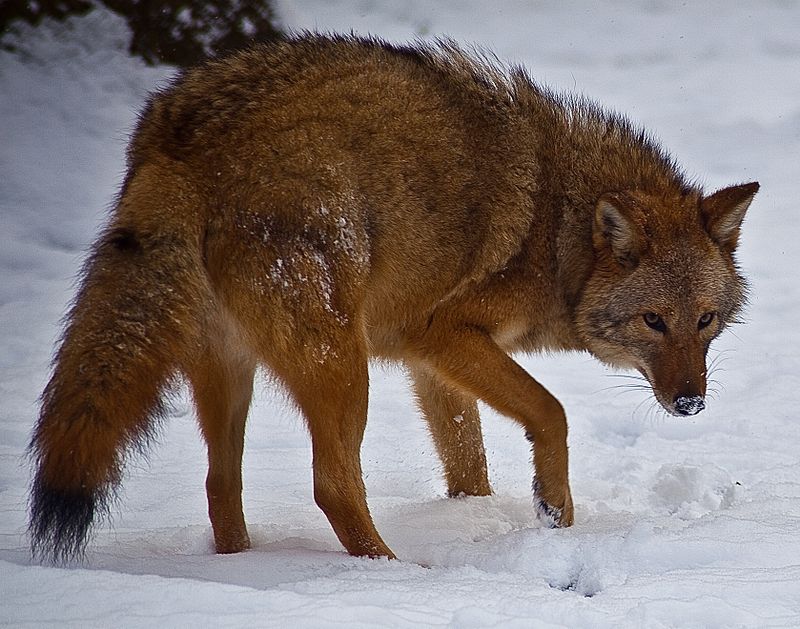
In the 1930s and 40s, a rather unusual looking breed of wild dog began to pop up across the northeastern United States. Smaller than a wolf but much larger than a coyote, the crossbreed was classified in the late 1960s as an eastern coyote or coydog, a cross between a coyote and a dog. Though no one really looked at the genetic reality of the situation, whatever this new wild dog was, one thing was for certain: It was ideally suited to this range.
Today the coywolf, as committed researchers like Jonathan Way thinks the species should actually be called, has colonised a huge stretch of northeastern New England and southeastern Canada. Way, founder of Eastern Coyote/Coywolf Research, has been studying coywolves since the early 2000s, focusing on the newcomers throughout his Bachelors, Masters and PhD. He says when he read John Theberge’s novel Wolf Country, describing a unique breed in Canada’s Algonquin National Park—a mix between remnant eastern wolves and coyotes—a light bulb went off.
‘I realised these so-called eastern coyotes were incredibly similar to Algonquin’s hybrid wolves,’ says Way. In 2003 he sent genetic samples from his local canine-crossbreeds to researchers at Canada’s Trent University for analyses. It turned out Way was right about the hybridisation, and in the last year or two has been able to pinpoint the animal’s more precise genetic mix
‘The dogs were 60 percent coyote, 30 percent wolf and 10 percent dog,’ says Way. ‘We think that as eastern wolves migrated south out of Algonquin, they bred with western coyote populations previously limited to the continent’s prairies.’
The coywolves’ bigger, more muscular body size allowed it to hunt ungulates in the forest as wolves do, but its coyote-side allowed it the skillset to scavenge more open terrains too. When they hit farmlands, the species bred with domesticated dogs like German Shepherds and Dobermans, additionally encouraging the breed to remain small enough to do well around people and in urban settings. Even the new breed’s howl is a unique mix, deep and wolf like to start with but transforming into a series of coyote-typical, high-pitched yips towards the end.

Way says without support from state and federal agencies, it’s hard to say how the species is truly doing. Colywolves are being ignored, he explains, and they’re not alone. A lot of North American predators face the short end of the stick when it comes to regulations and research funding. People think cute and cuddly animals inherently deserve protection, while abundant, scary, herd-devastating predators are less deserving, allowing the interests of smaller groups like hunters to prevail. The permits Way needs to continue his work in Massachusetts have so far been continuously denied by the state’s Fish and Wildlife agency.
Most eastern states and parts of southeastern Canada have lengthy coyote hunting seasons. In some places like New Hampshire, the season runs year round. Many states and provinces are also still encouraging, or reintroducing bounty-hunting incentives for coyote pelts. Wolves are entitled to protection in some of this range, having been previously expatriated from the region, but not all of it. Yet despite these roadblocks, Way says coywolves will likely endure.
‘Their biology is interesting, but maybe even more intriguing is the fact these animals may owe a big part of their success to human development,’ says Way, unlike a lot of species that we hear about nowadays. ‘Coywolves will probably continue to thrive whether or not they get the recognition they deserve.’
